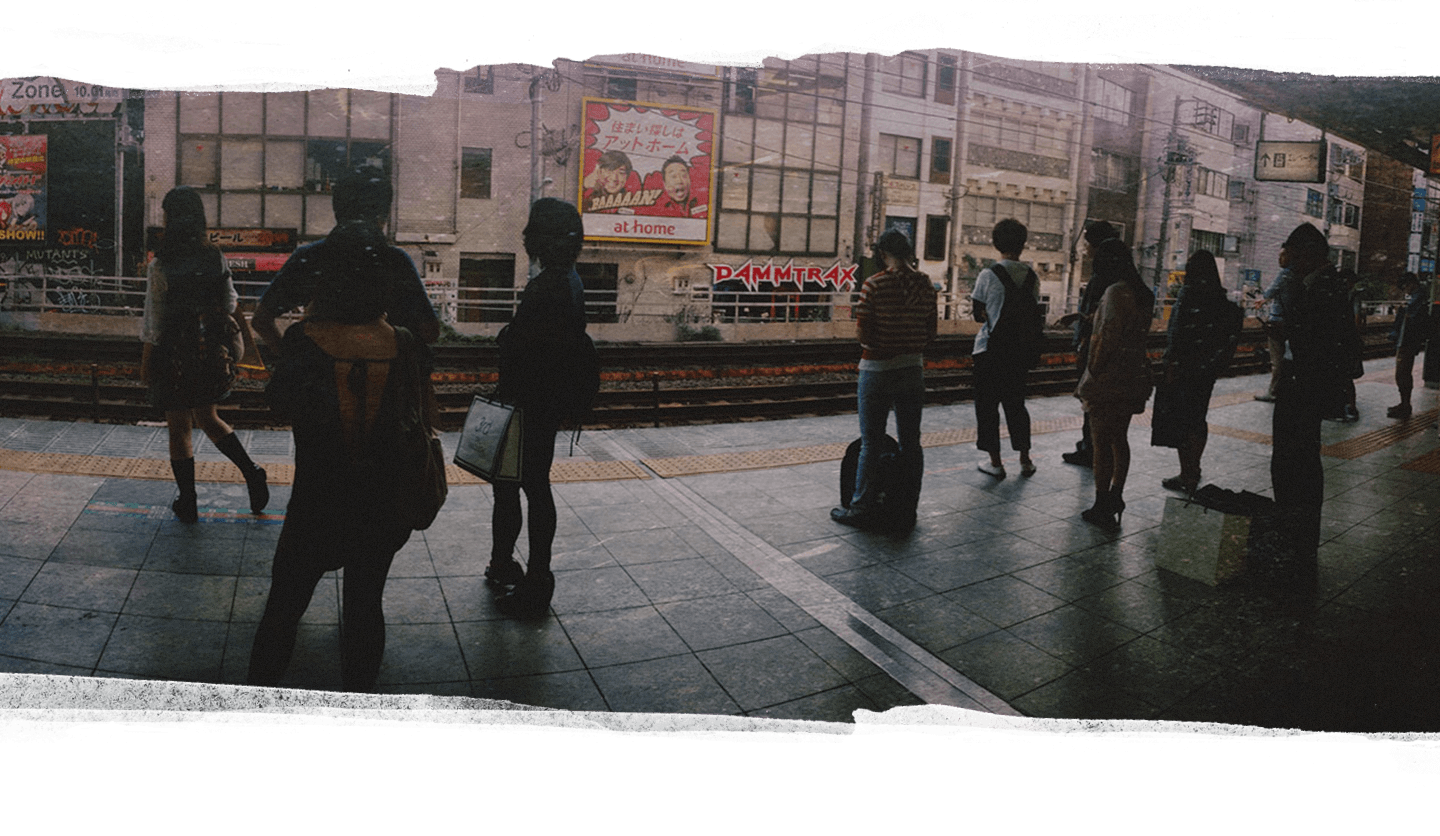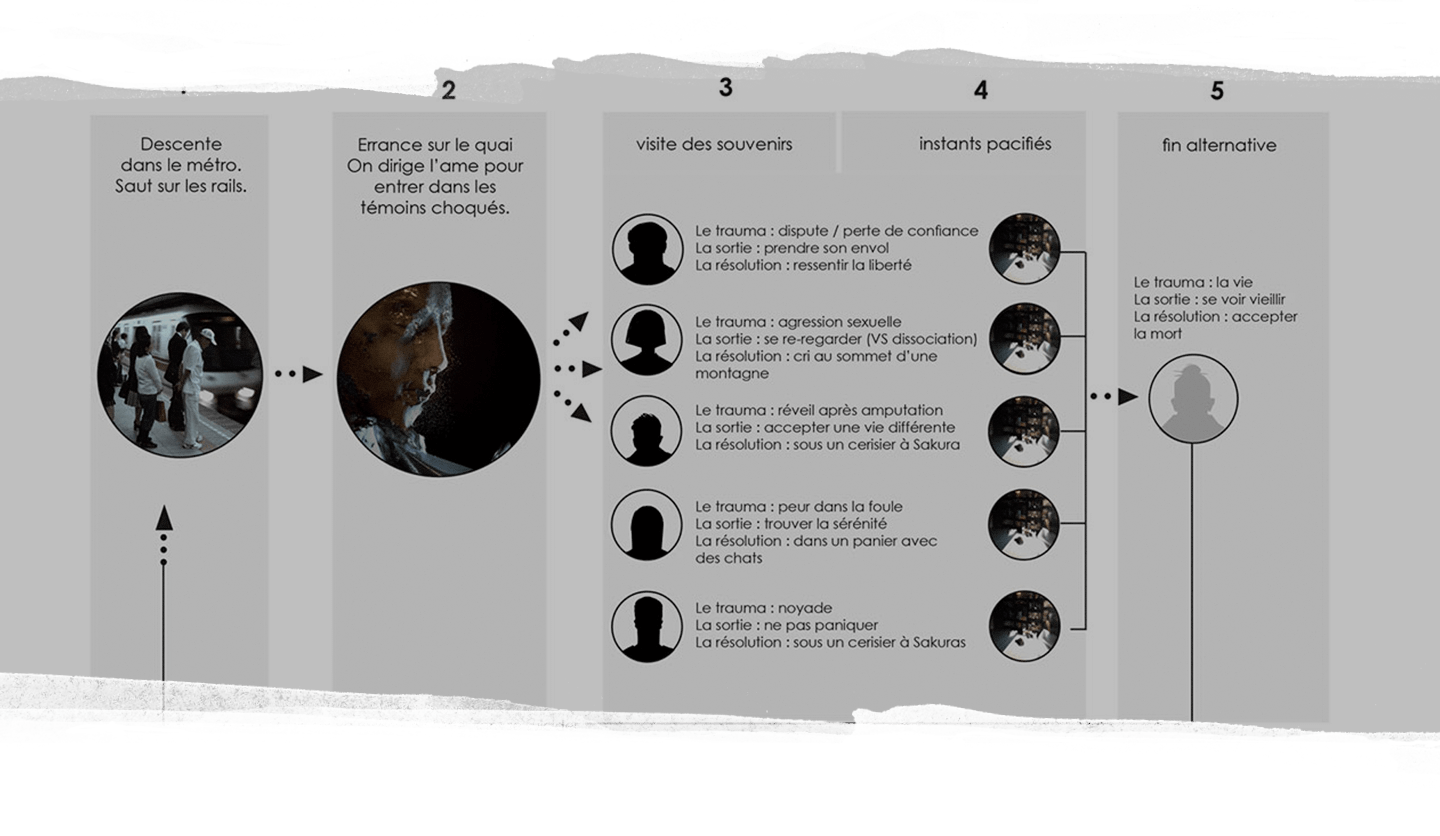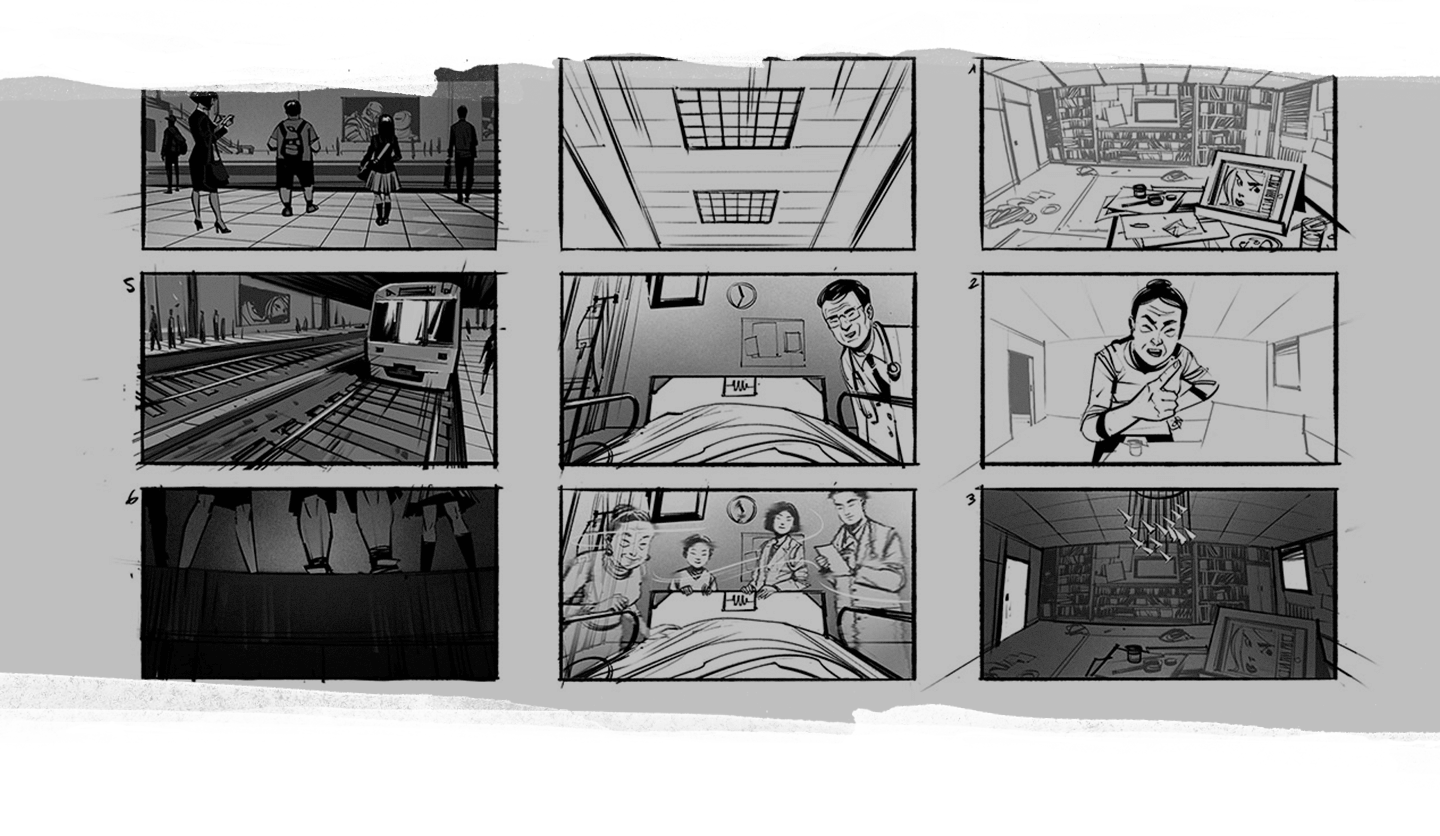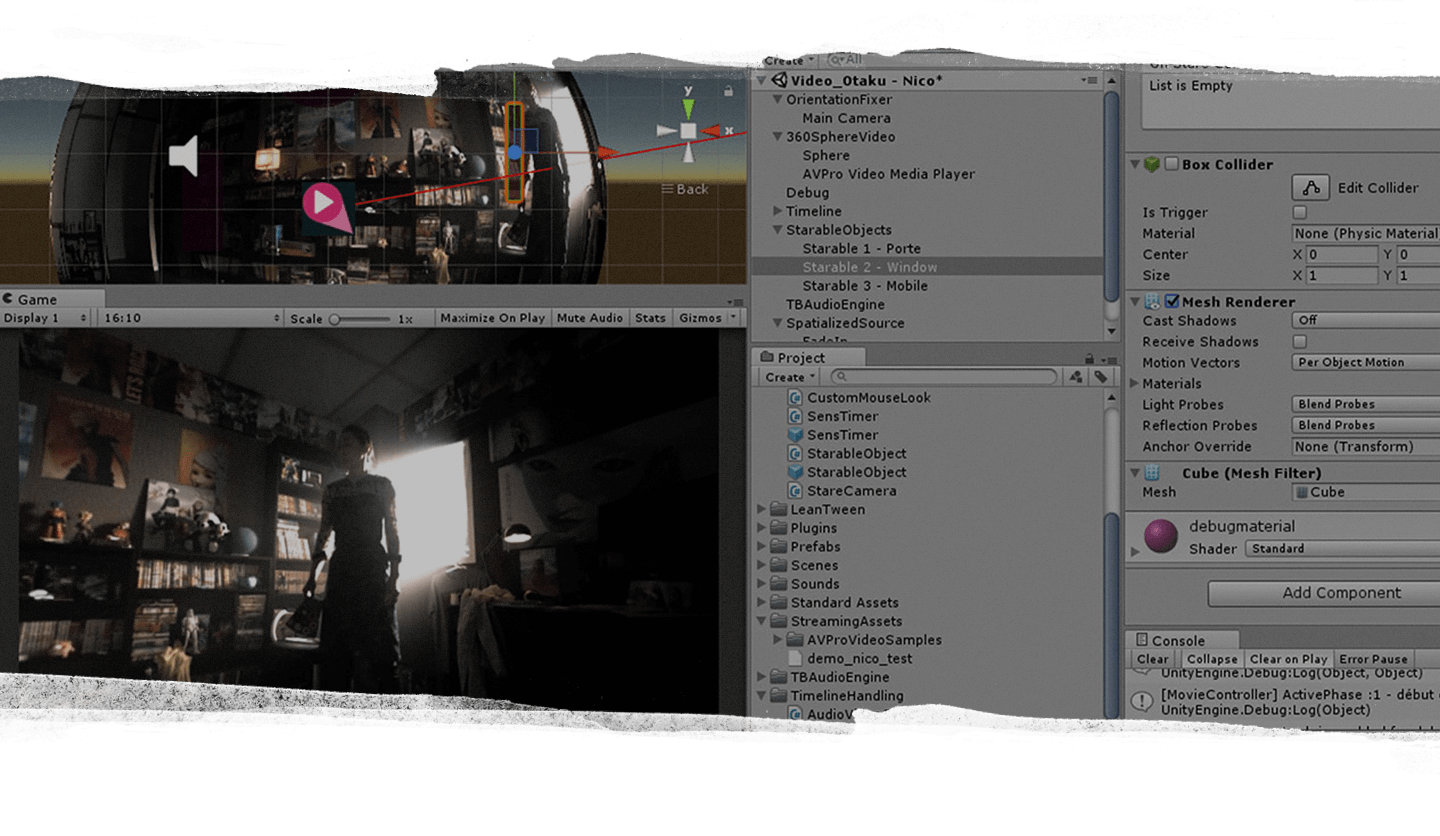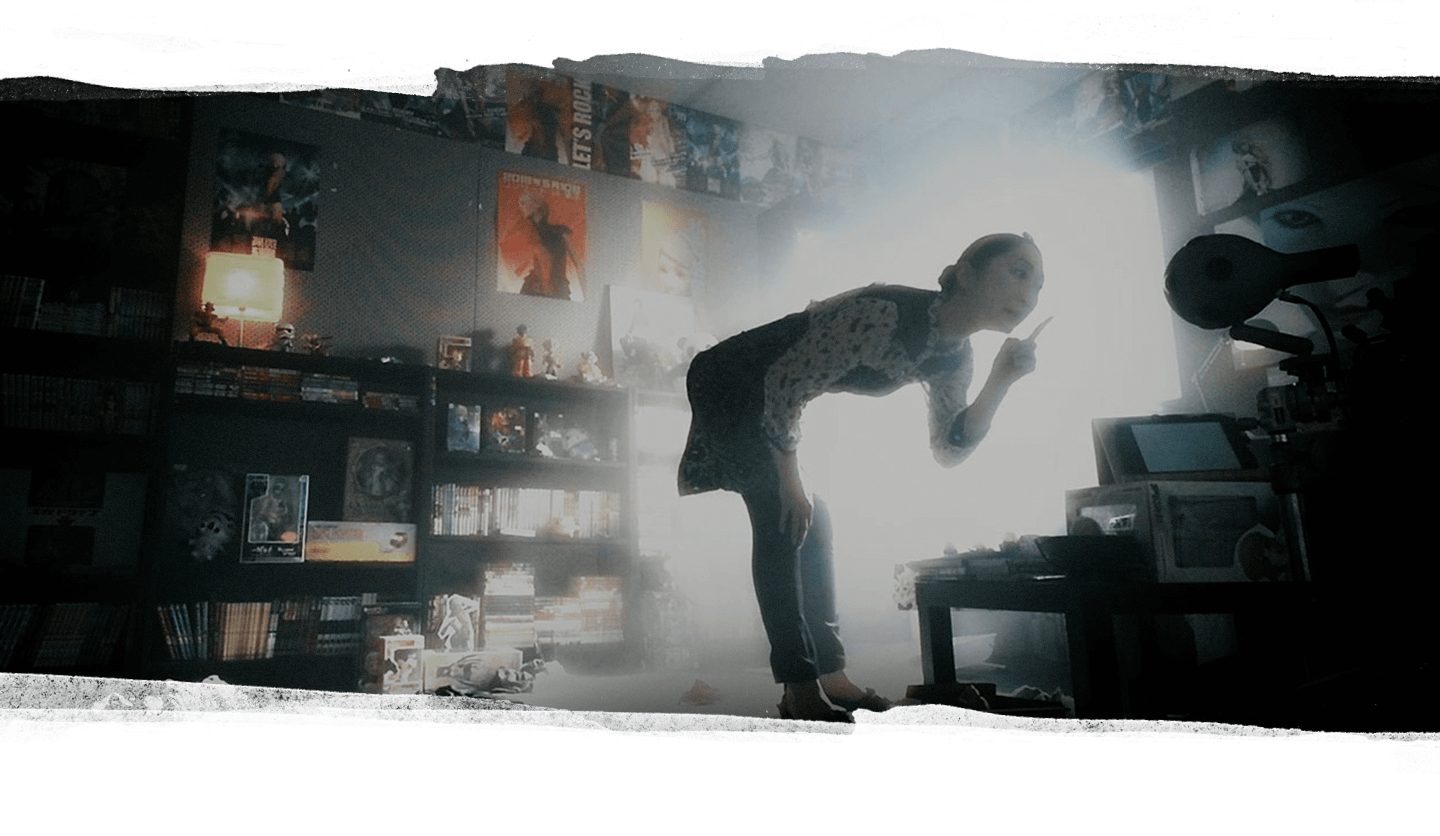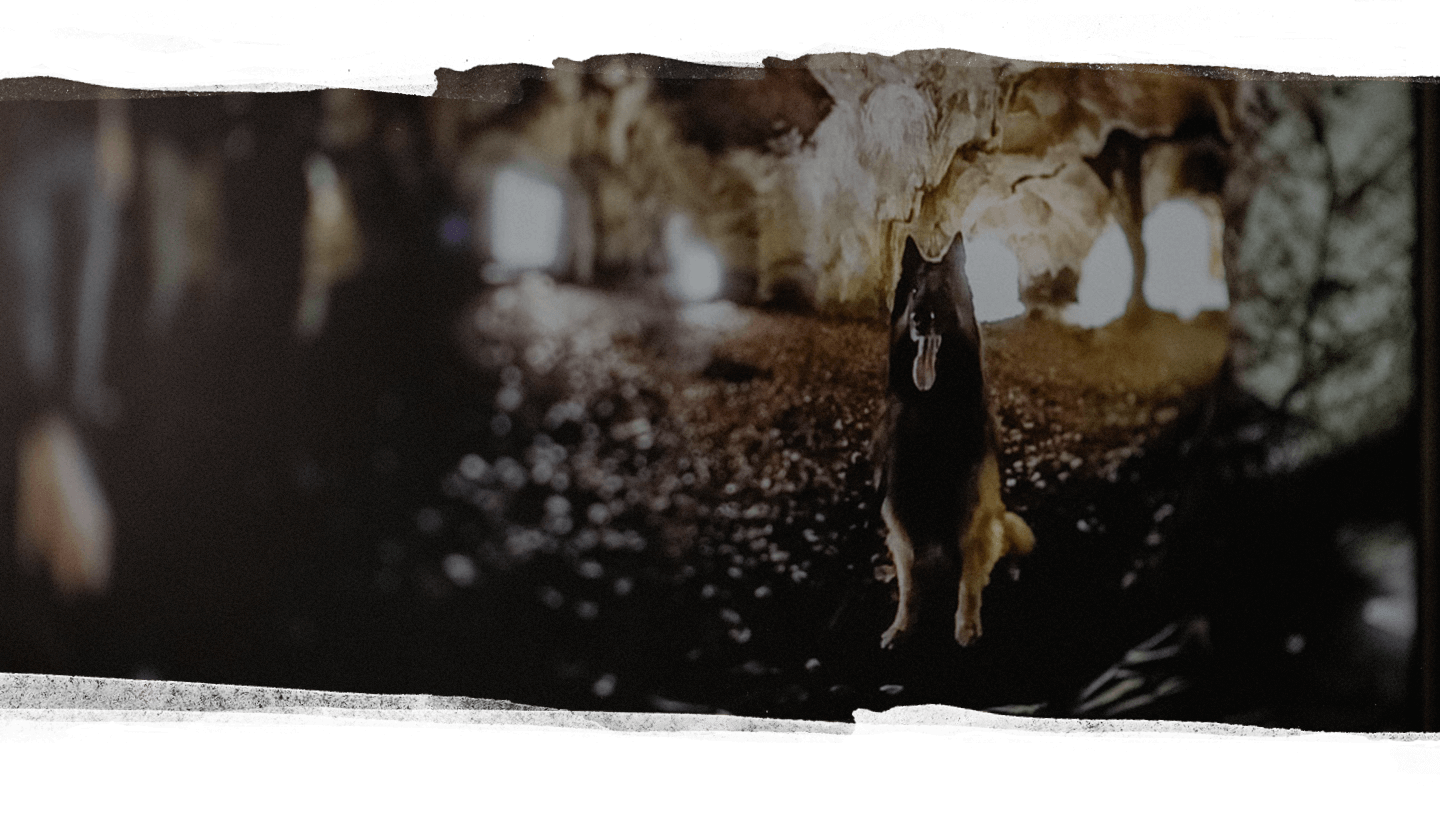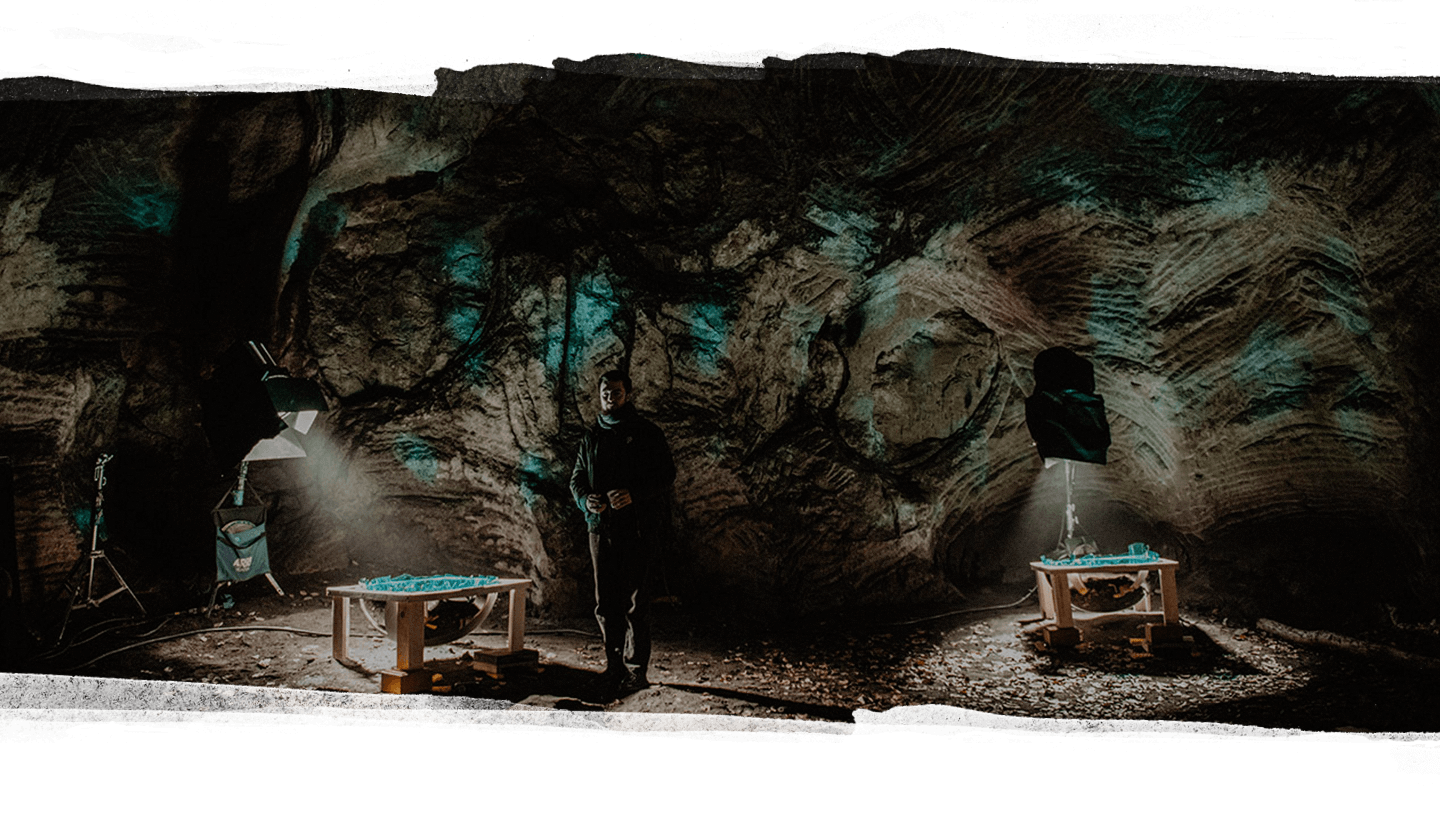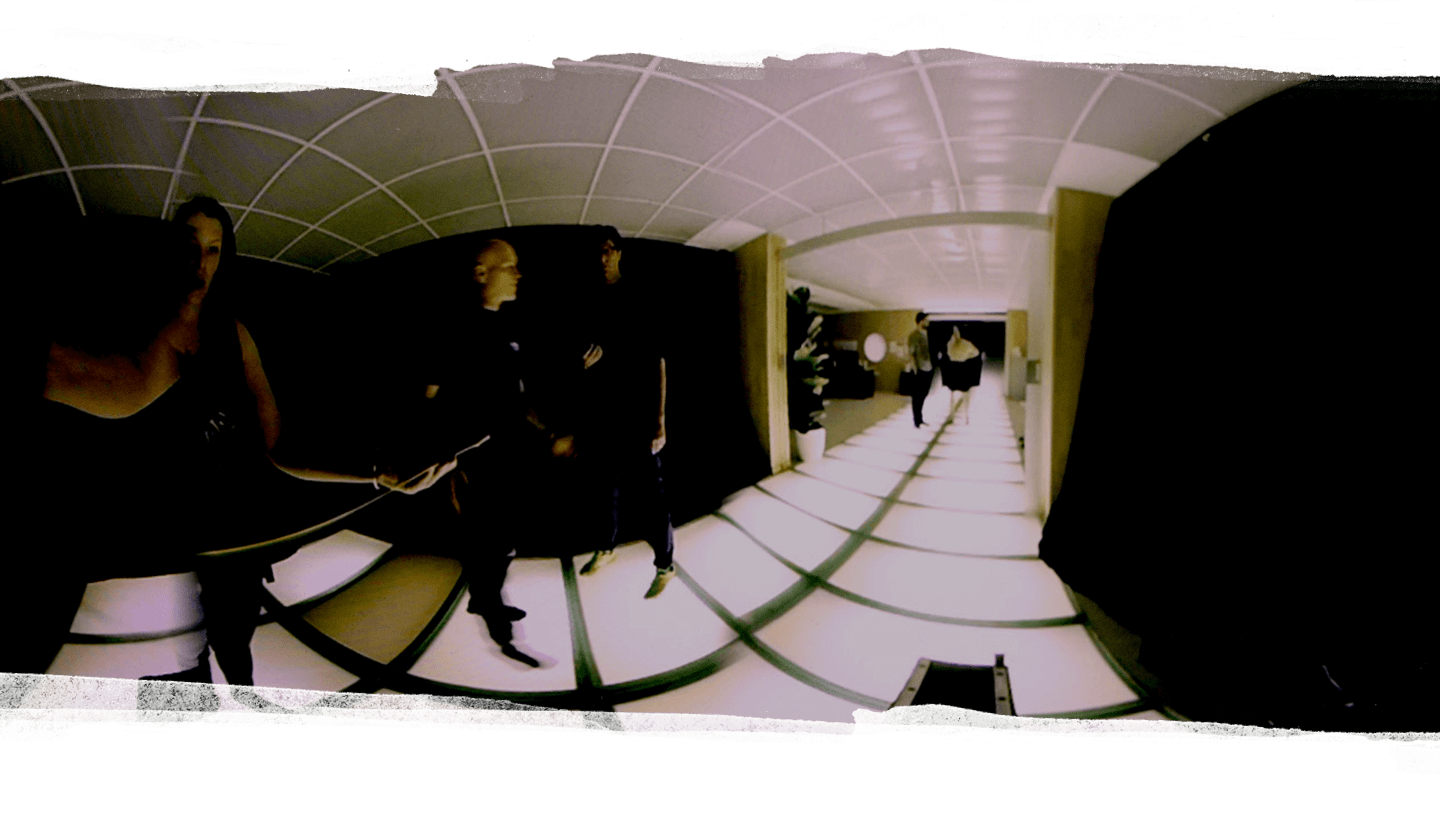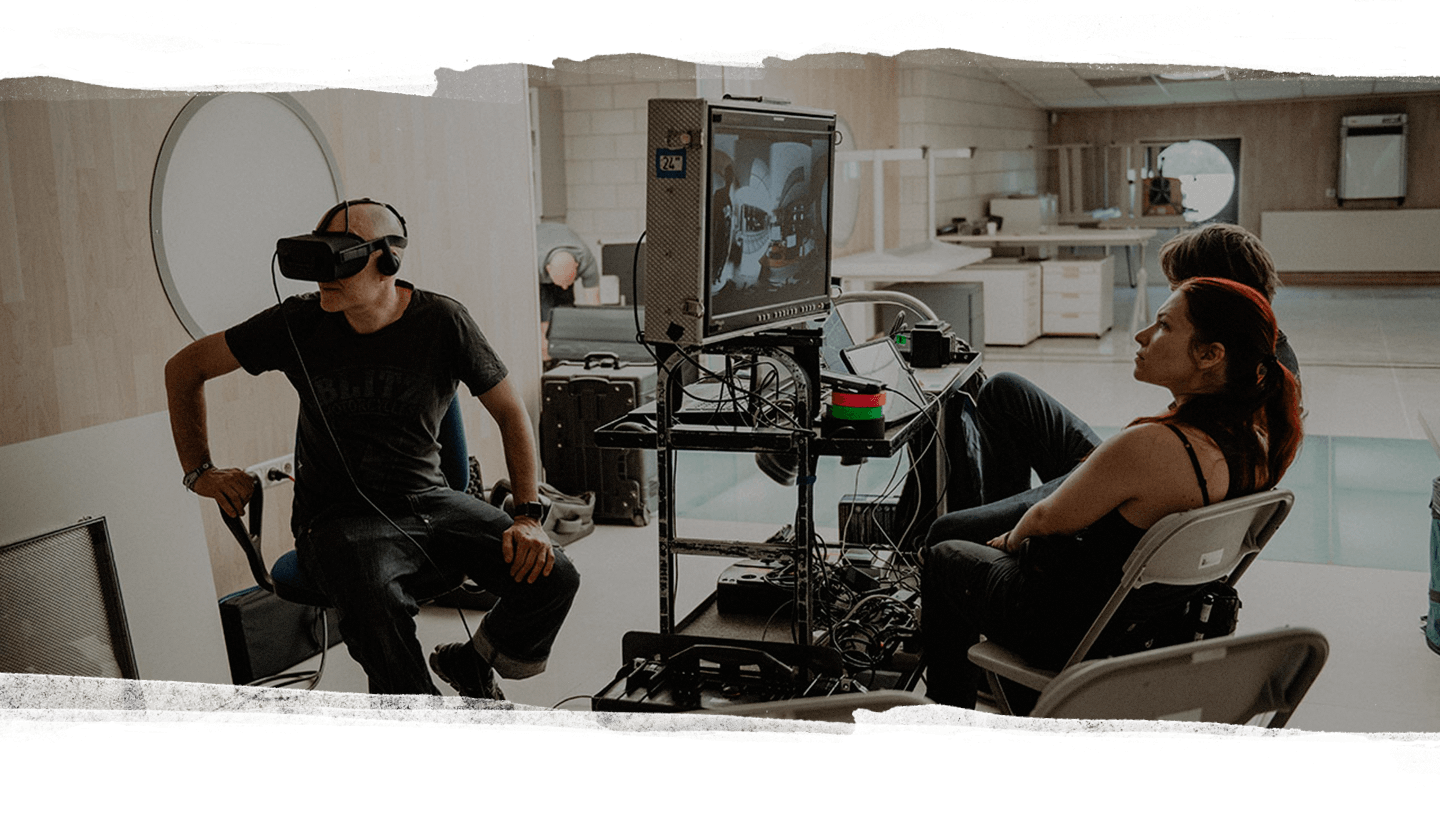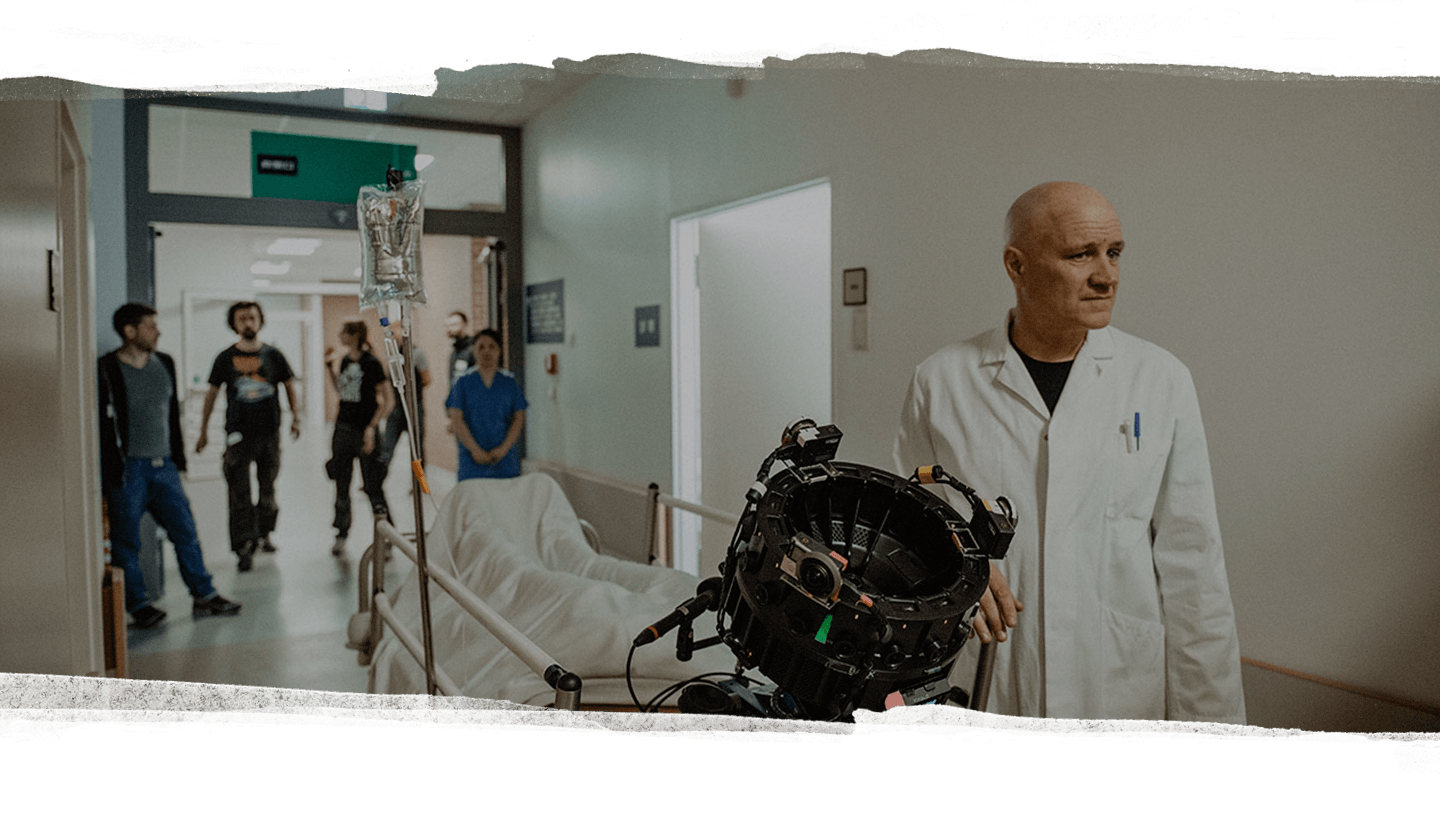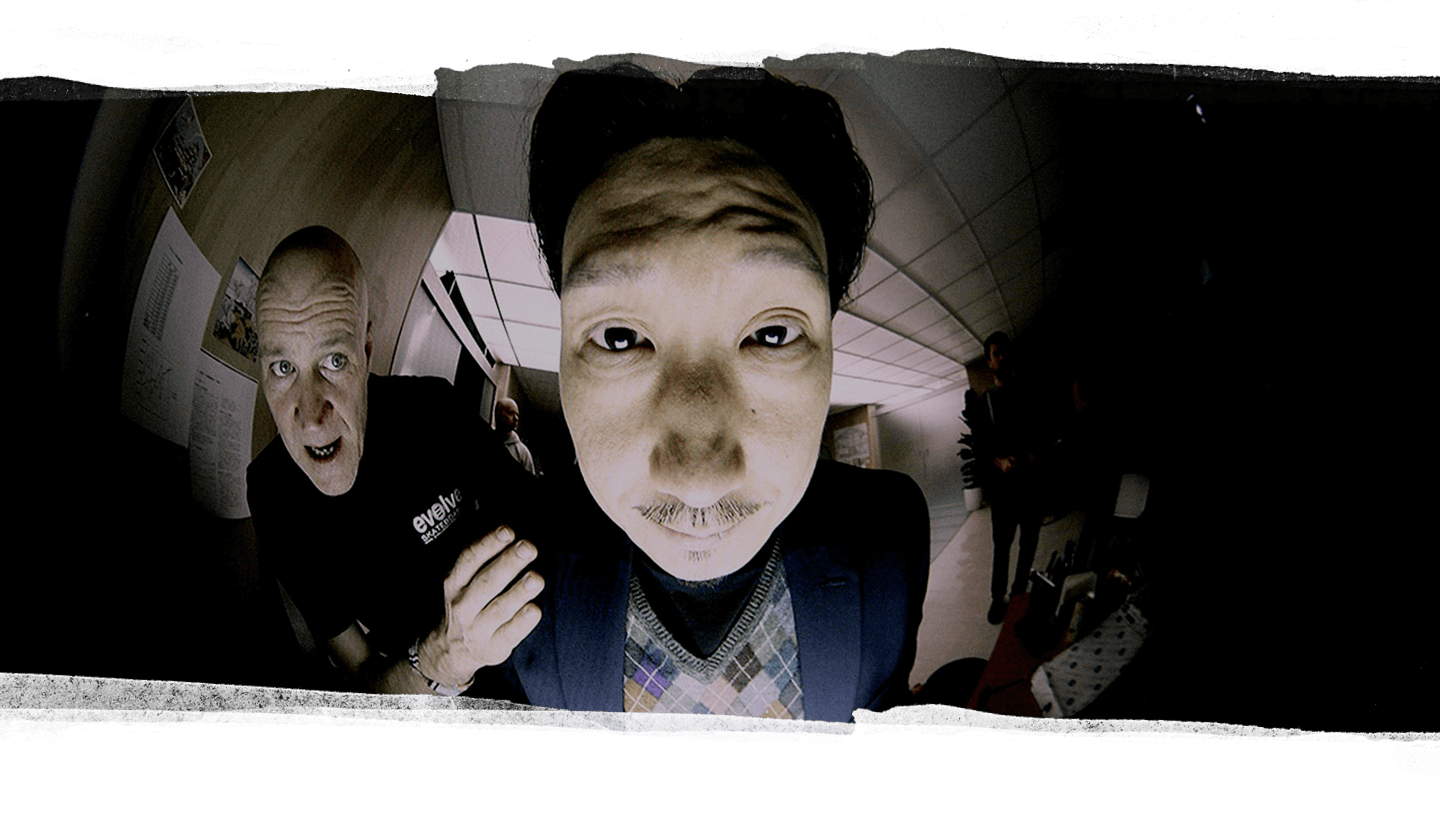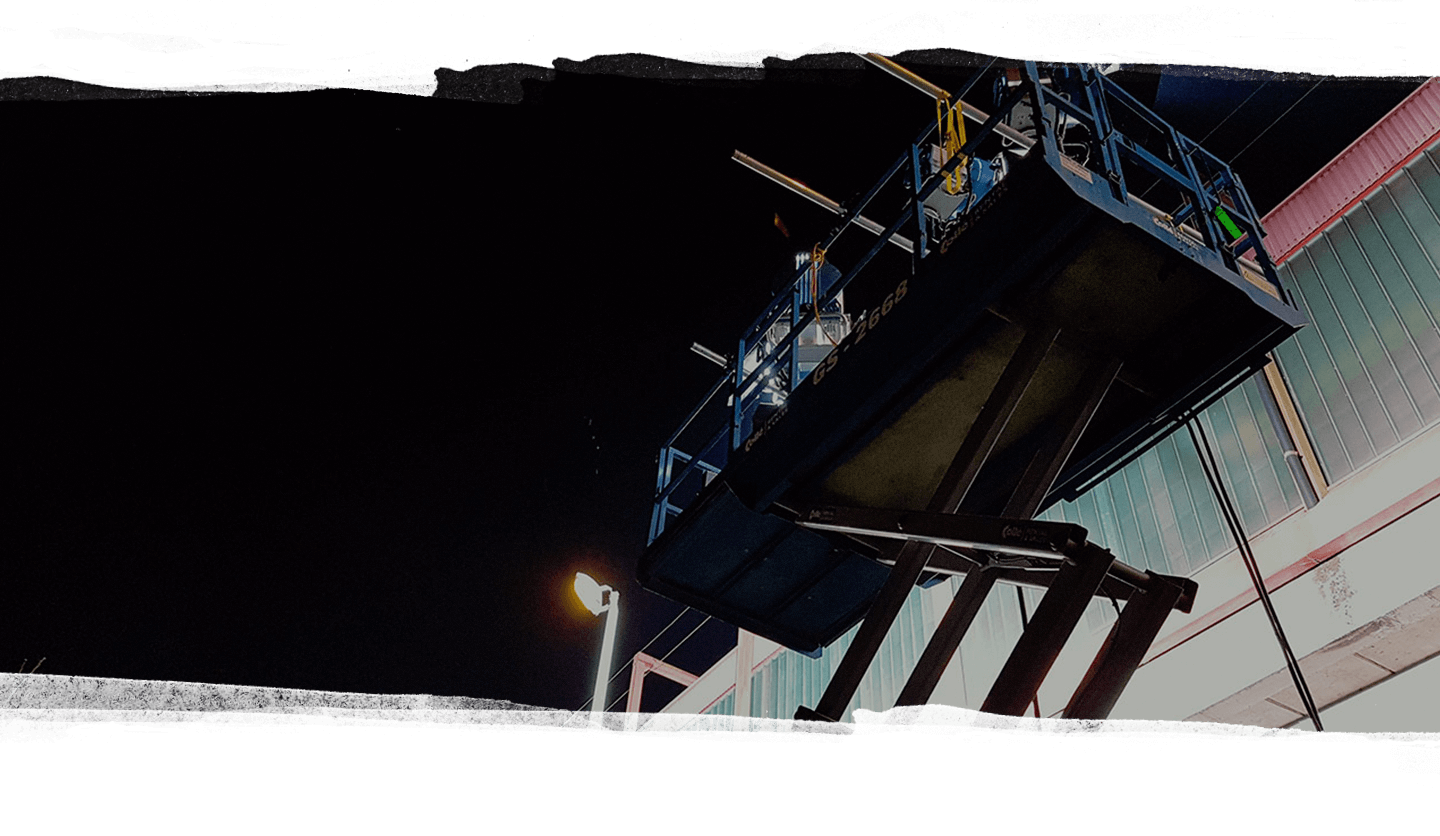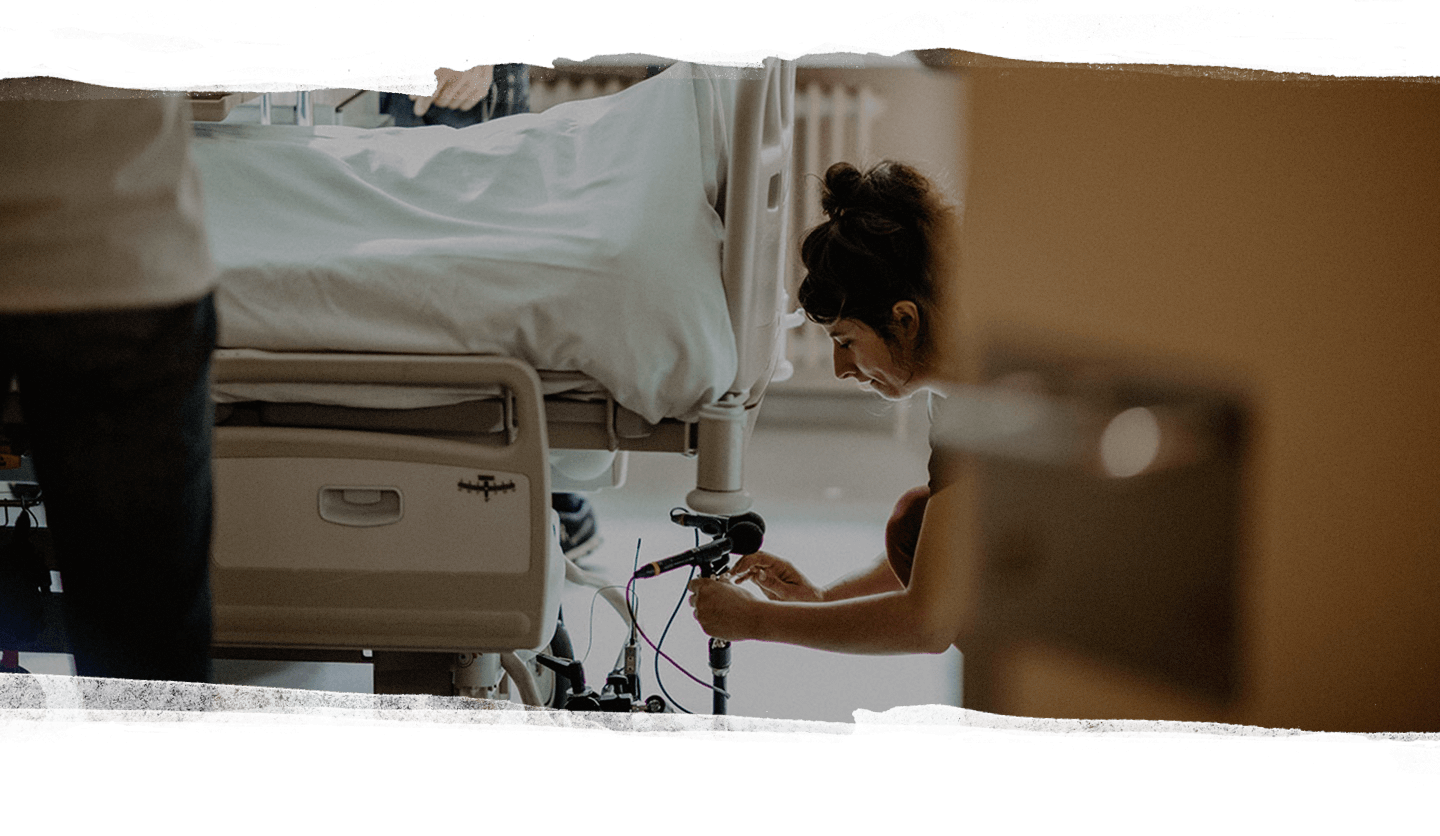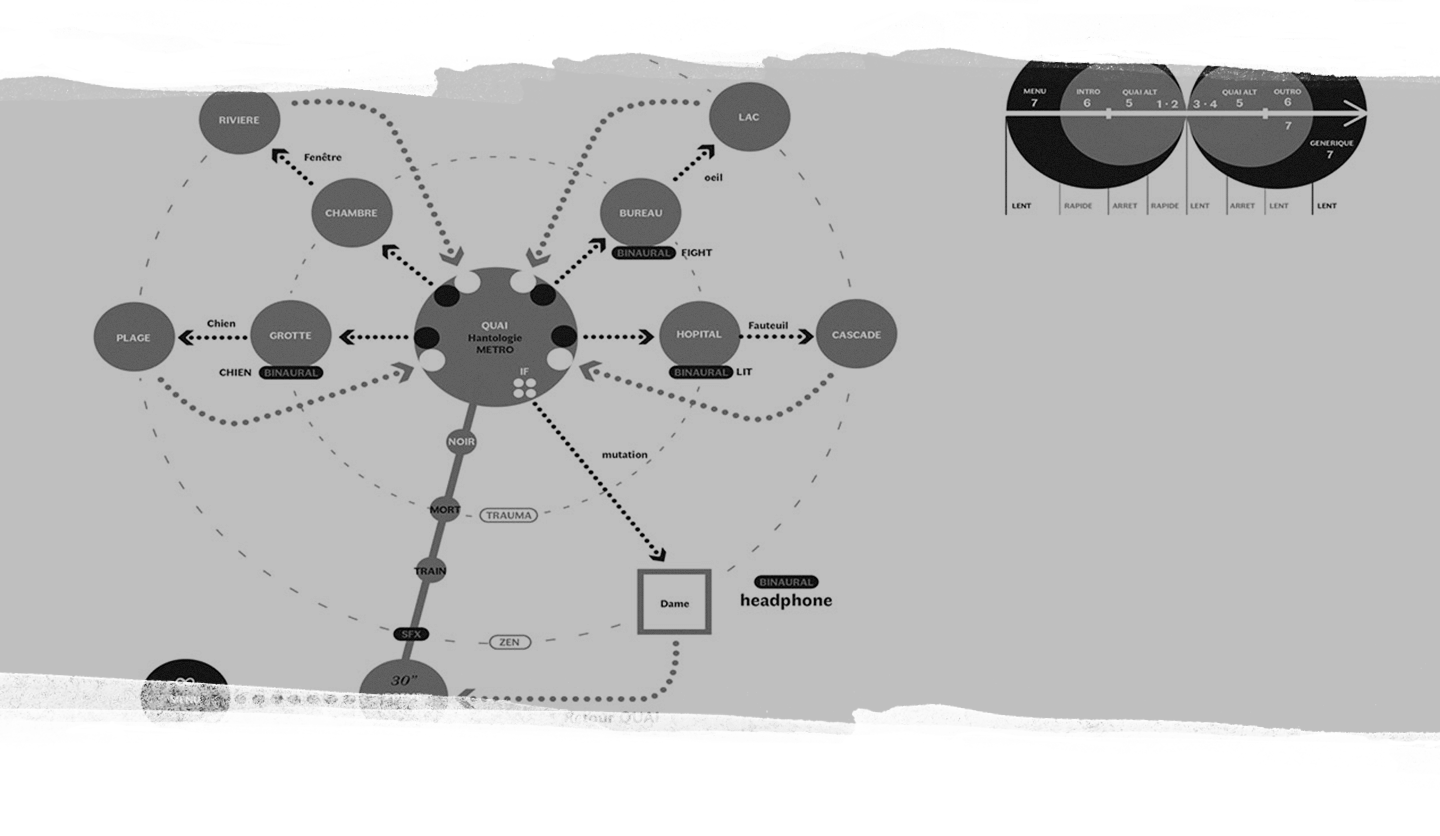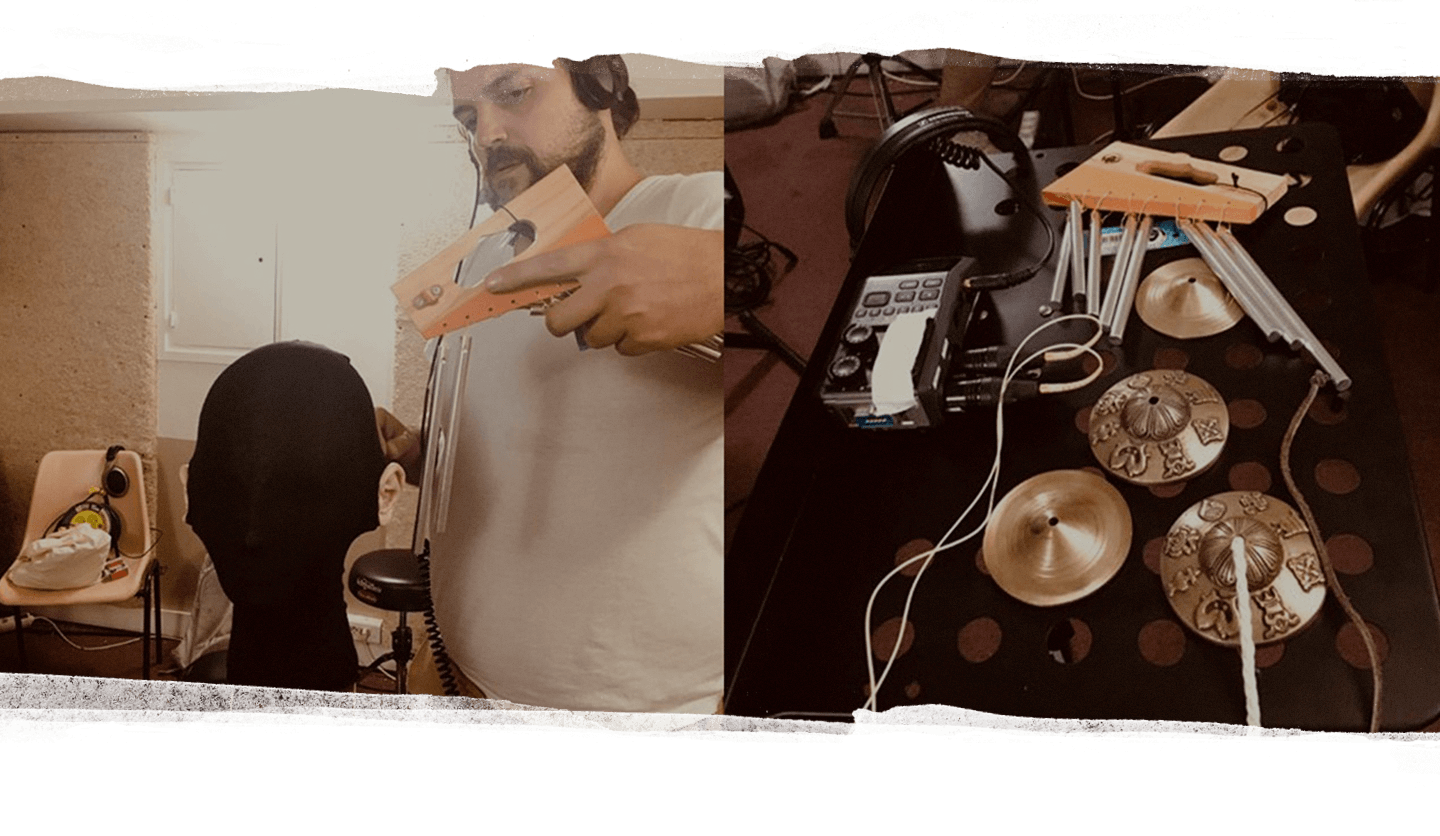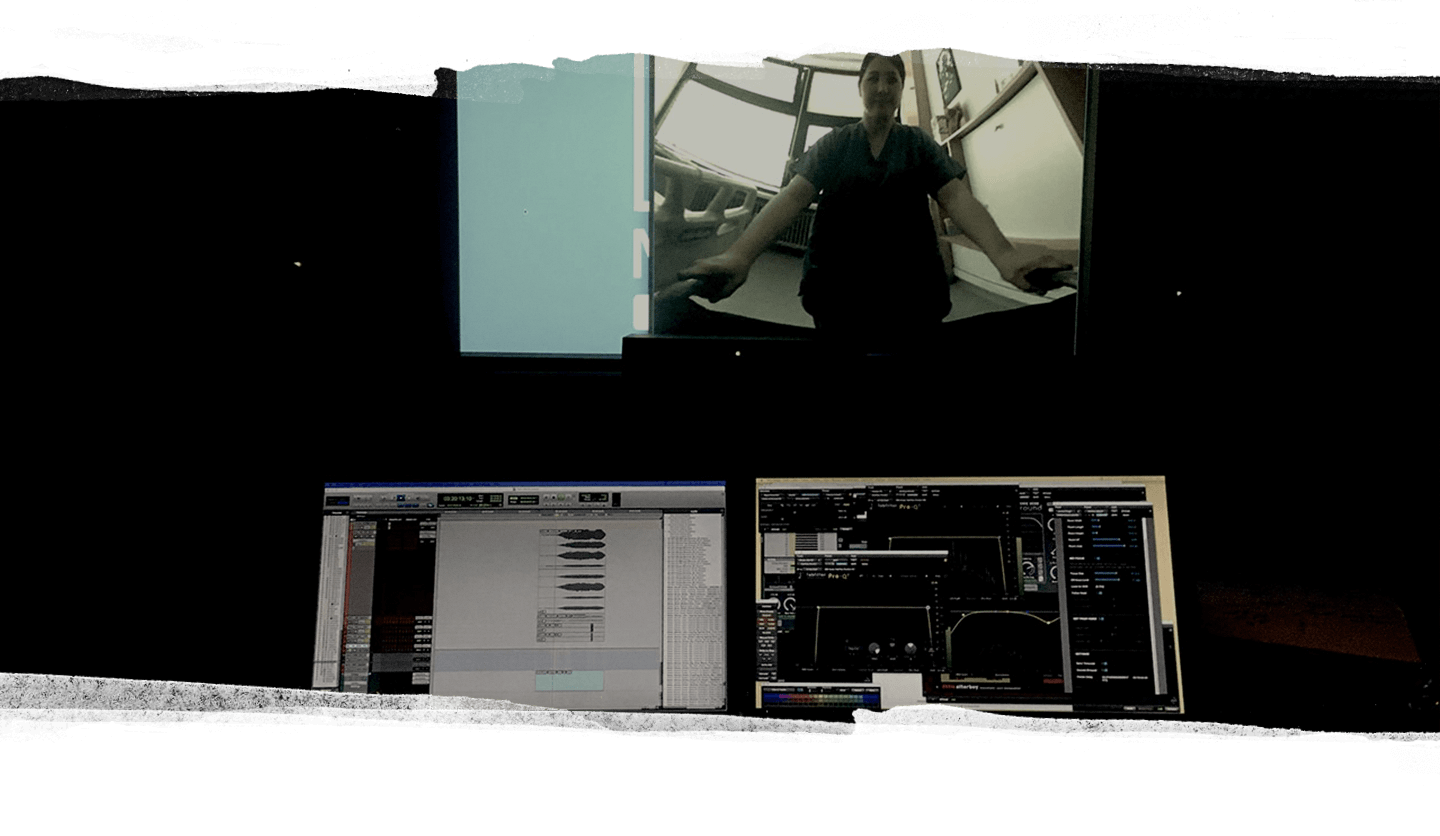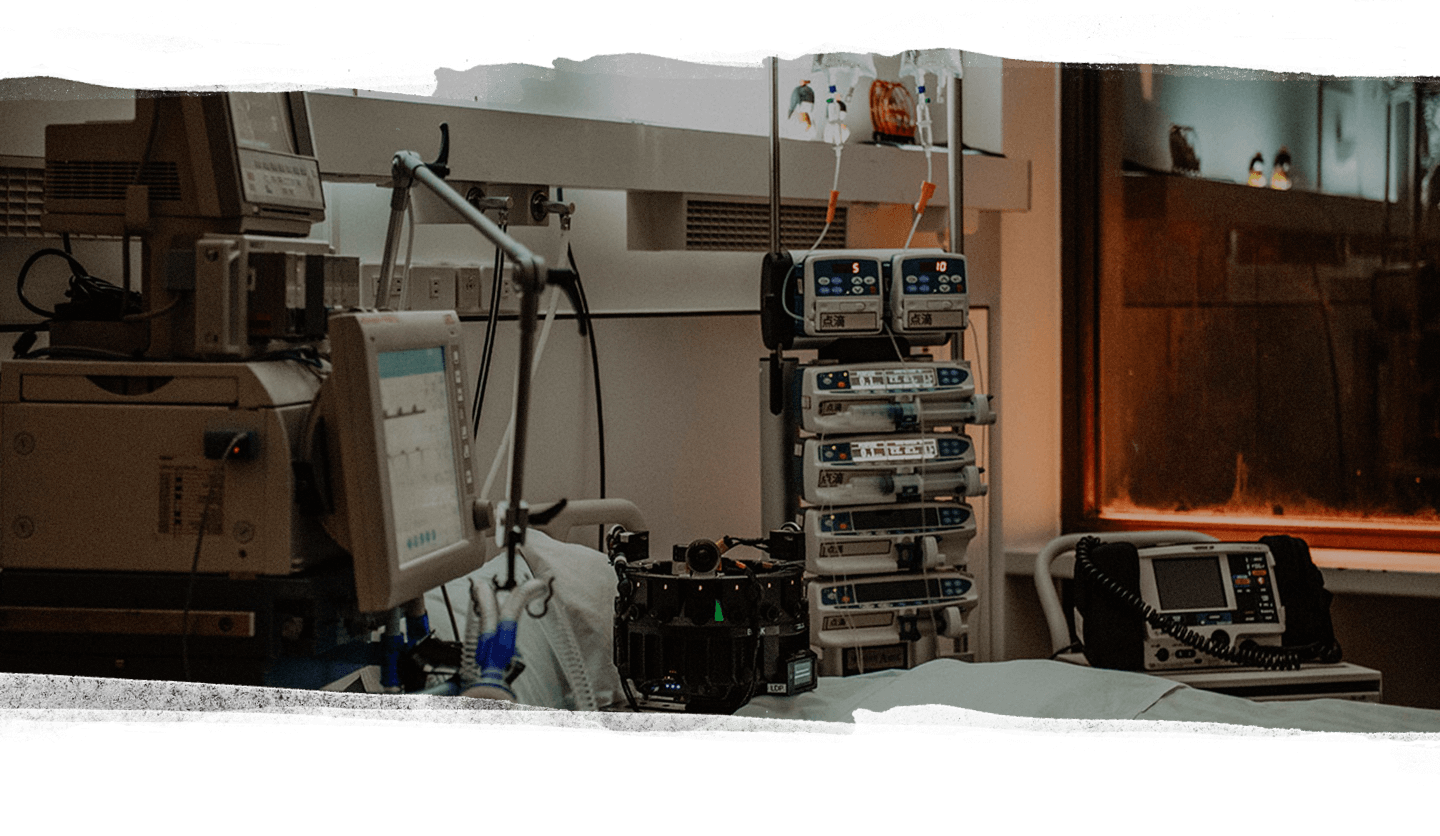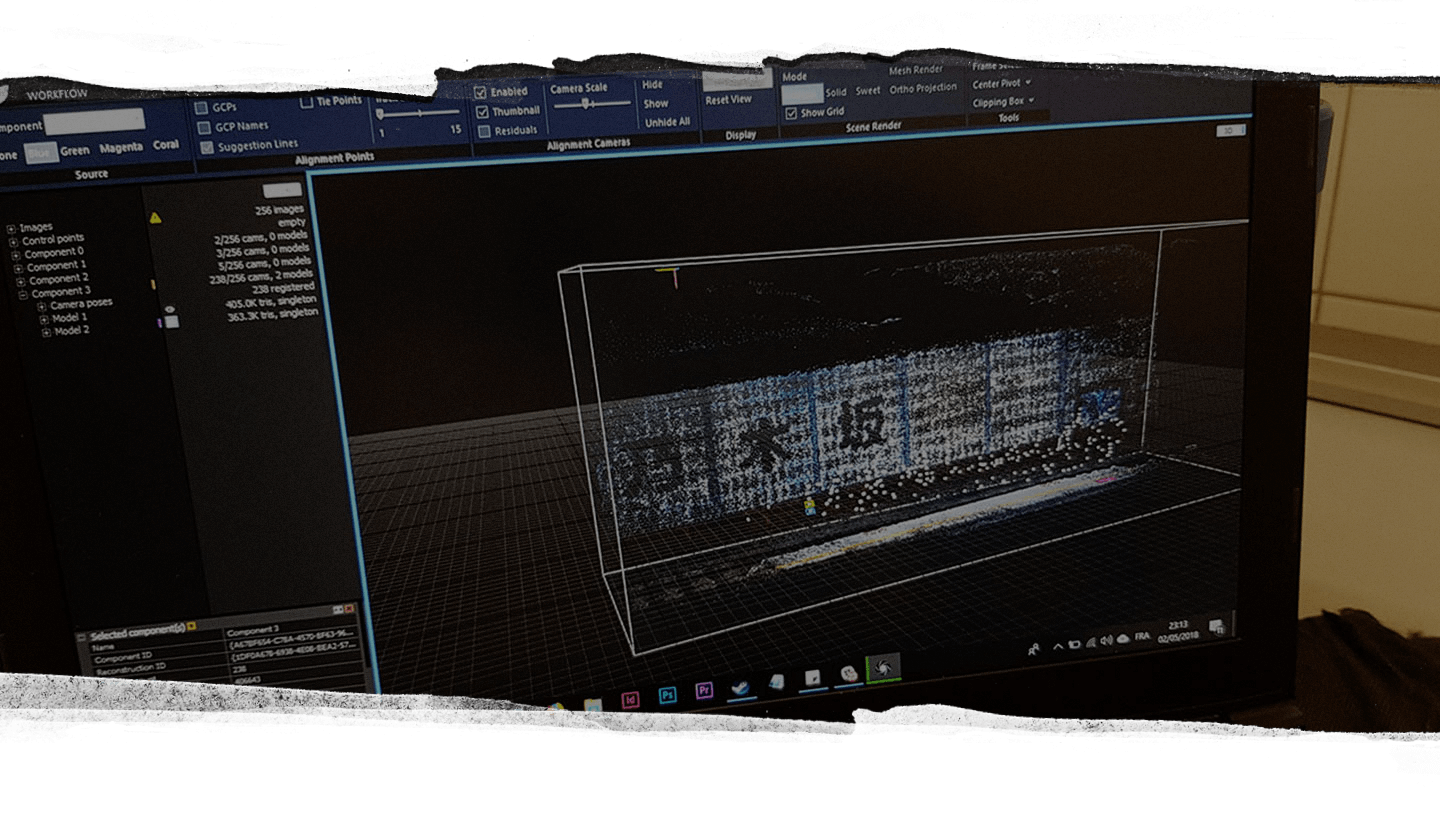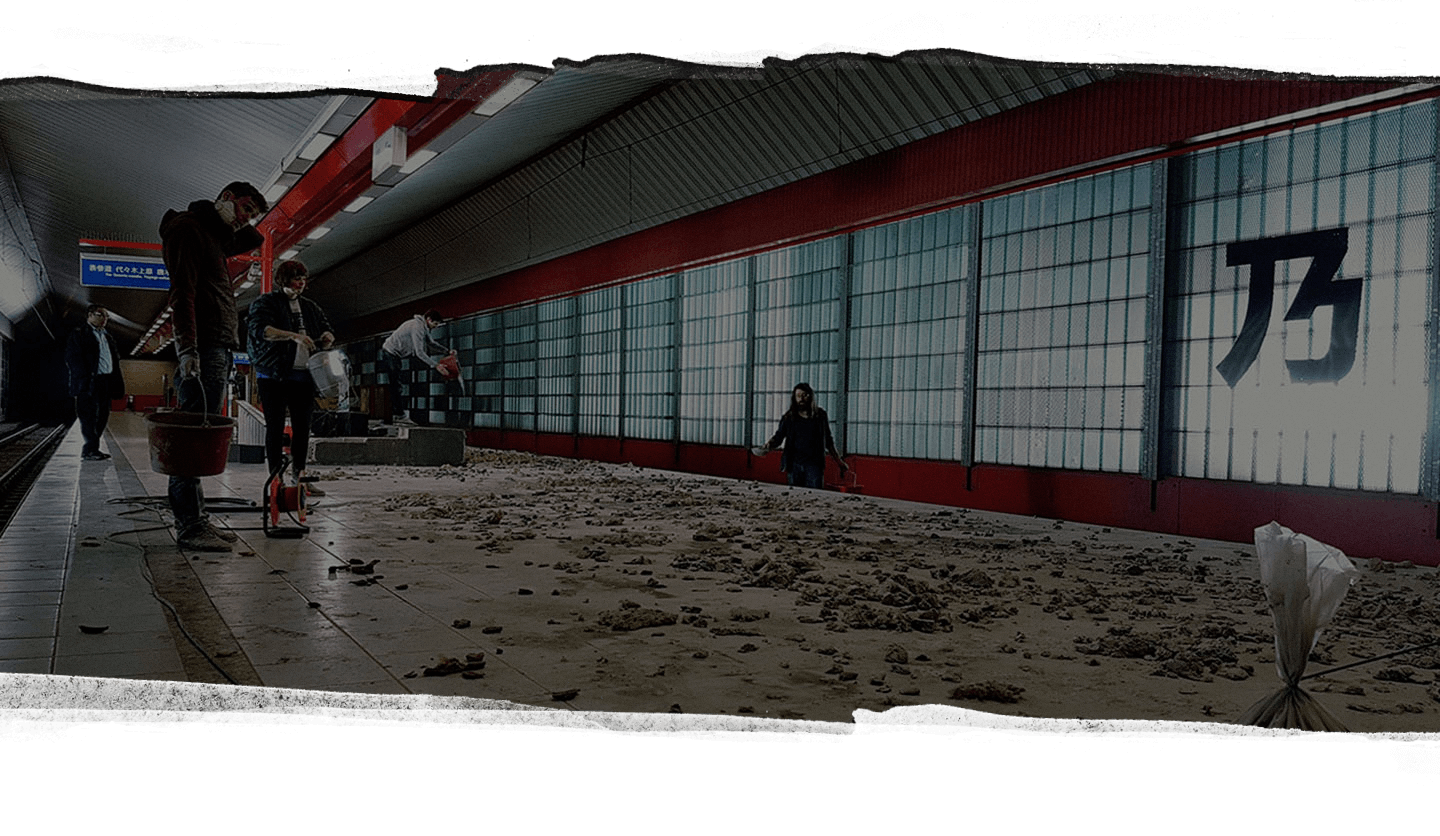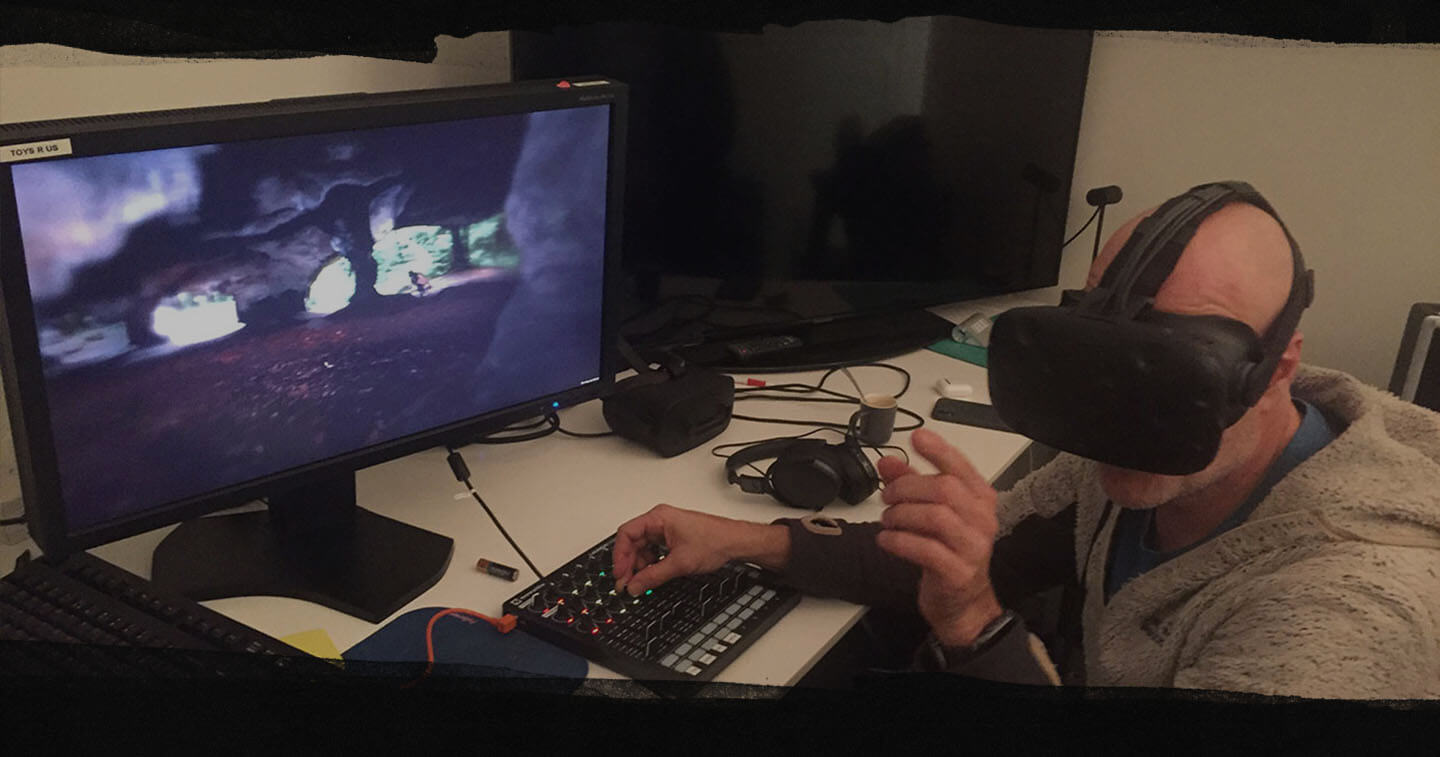Team
THE AUTHORS – CHARLES AYATS
A first trip to Japan often leaves a big impression. For a Japanimation or manga enthusiast, the surprise is even bigger, because you get a feeling of déjà-vu. You explore the city as though you had already been there several times, or in several lives.
Dreams and reality intermingle as though in the fables of illusionist Satoshi Kon (Paprika, Millennium Actress) even as memory tries to grab hold of something, anything, like in the films of Mamoru Oshii (Innocence, Avalon).
The feeling of altered perception is like a virtual reality experience, a kind of lag between mind and body. When the mind wanders, how far can it take us?
7 Lives explores a narrative through lived experience, starting from a radical physical and emotional state: what does imminent death feel like? This event isn’t central to the experience, it’s a starting point. We’re not trying to create a morbid worldview but, on the contrary, to imagine a world of unique perception, to access a new form of sense perception.
Virtual reality is a media which invites us to explore links between spirituality and sensoriality. Through its technology and its possibilities, it opens up our perception of the world and helps us to reformulate a new mind-body relationship. One of its most unique features is that it takes into account the spectator’s movements and positions.
In 7 Lives, the player must proactively explore the 360° image to bring story along, but also move the (invisible) avatar in order to gain access to the next part of the narrative. This experience is built on a hybridization of cinematic conventions and video-game mechanics.
We can see a parallel between the heroine who is a victim of her life’s linearity, a prisoner of her body, and the moment when she takes possession of her free will to better care for herself – through the mastery of her mind. (Technically, this is achieved through the interactive and more specifically through her real-time actions, which the story takes into account).
New though it is, VR already has a large range of specificities to utilize – or not – depending on the narrative proposal. In 7 Lives, we focused on an incarnation that utilizes a first-person POV to be able to then amplify out-of-body sensations. Over the course of writing we favored a sensory approach in which characters and the narrative framework become secondary; instead it is the environment and the characters’ physical reactions that propel the story forward. In this way, we were able to spark introspection and the sense of presence we wanted to achieve.
We tweaked the script until the end of post-production. For example, by programming special effects which react in real-time to the player’s actions. That represented a paradigm shift because we began involving the spectator in the construction of the story itself, rather than just its comprehension.
Charles Ayats
THE AUTHORS – SABRINA CALVO
I don’t remember 7 Lives. I don’t remember writing, designing or dreaming of it. It just appeared, like an inspiration.
Where does this project come from? From an deep-rooted desire to approach VR not as a narrative medium but as a way of bringing the invisible to life. To lay down the groundwork for an exploration of the soul. This meant building bridges between Western and Eastern spirituality. Not by contrasting them, but by fusing them. I don’t believe in duality, and the intention was to show the two approaches are two sides of a same coin. These questions must be tackled like a kind of grey area in which all our references and certainties disappear.
From the start, I knew this “operation” wasn’t intended to be experienced like a story, but rather like a vertiginous leap into the great unknown – a door that opens onto a state of consciousness – and it seemed that what we call VR, at least the thing we call VR for lack of a better term, was the right venue. Because we had to remain radical in formulation and execution, without giving into linearity or dramaturgy. None of the traditional narrative rules could be applied to what we wanted to do. As for any form of absolute desire, above all we had to respect what the project was saying about itself, to let it take over. Not to allow the vital source to run dry, but rather to encourage it to gurgle forth, again and again, without normalizing it, without slipping it into the ill-fitting clothing of the sensational.
Today the operation is complete, the “system” – because it is one – ends and begins its loop around each new player. I try to understand, deep down, why we did it and if it was worth it. (I’ve stopped asking myself whether it’s successful because I know that’s the part that evades us.) The answer is yes, yes and yes. And yet, 7 Lives takes a page straight out of reality in order to be seen and experienced. It’s a piece of intuition that has taken form. We are lucky, I think, to be able to say it exists. That it’s up to the invisible to wow us for a few minutes of our lives. A just barely-born refrain made of juxtaposed unities. All these people, all these hands, sewing the virtual together to give it meaning, or a lack thereof.
Today, 7 Lives has become a collection of other people’s lives and talents, and all the experiences and testimonials to come. Some, it seems, want to find a logic in it, others let themselves be carried away. So many choices and decisions around the same object of operation. At the very least, this has allowed us to question its meaning. It has put us in front of a wall. Everything born, as a relationship, as intensity, as respect, as a greeting. So many lives gathered around a black hole, the persistence of a damp soul in the dryness.
That’s what I have to remember. It was well worth it.
Sabrina Calvo
THE DIRECTOR - JAN KOUNEN
Virtual reality isn’t a way of “augmenting” the cinema, it’s a new way of telling stories and creating experiences, with its own language.
Since the advent of cinema, we’ve been working inside the screen, and we haven’t stopped toying with the limits of the frame. 360-degree experiences have been a game-changer: a virtual reality film is stored in the viewer’s mind like a lived memory. We can bring out sensations and emotions with unprecedented depth and poetry. These new tools afford many different possibilities for continuing the work on altered states of consciousness I started with Blueberry, in documentary and in fiction (Other Worlds, 99 Francs).
7 Lives continues this exploration of “other realities” in two ways.
First because it attempts to convey a liminal state of awareness, that of an after-death experience, something the cinema has often dealt with before. But here, the out-of-body experience doesn’t reference well-known myths (the light at the end of tunnel, ghosts). Instead, the idea is to suggest that the border between the world of the living and the world of the dead is very thin indeed.
The second vein of exploration concerns memory. Within each character, there is a memory that we need to make accessible through an altered perception of time and space. For the staging of the characters’ memories, we thought long and hard about how to make the different situations and memories comprehensible without words.
The shoot turned out to be quite close to what we do in the movies: the crew members, the staging, and the work with actors doesn’t really change on a virtual reality set. The setup on the other hand was a little unusual: I was the only one to be able to use the helmet directly. Since the scenes take place in the first person, I was in the position of the character, but also already in the viewers’ position, and I had to pay attention not to the frame but rather to all the details that might attract his or her attention. This made it something like directing a play, where there isn’t a single point of view on an action, but rather a multitude of possible gazes. We also worked in post using the game engine Unity, so thatthe film could reac basedon the spectator’s gaze.
This was an exciting project to direct. We had to invent a way of remembering, character by character. The moviemaking skills I utilized to make their emotions palpable make 7 Lives first and foremost a sensory experience.
Jan Kounen
SOUND DIRECTION - FRANCK WEBER
7 Lives is a cross between a linear narrative format – the cinema – and a non-linear one, videogames. The cinema offers its continuum and its dramaturgy. Video games offer their spatialized narrative, and a flexibility in terms of interaction and temporality. This narrative meeting was an incredible playground in which to experiment with sound.
The observer’s central position and 360-degree vision led us to design an entirely spatialized mix. Part of the work was done on a soundstage and the other directly integrated into the Unity 3D Engine. Thesound experience was buil basedon a system of rules for each of the different worlds of 7 Lives, followed by countless roundtrips between the VR visual experience and the editing room. Since the tools for this job haven’t yet been optimized, I sometimes worked using my own memories of the images and experiences.
My role was as hybrid as the project itself: sound direction, including the creation of an interactive system; coordination of the work of recording, editing and mixing; sound design and integration of all the sound components (SFX, sound design, music); building tools.
In 7 Lives, you move from one world to another, from one awareness to another, from one person to another. These identities are interconnected. The sound design is like a system of signs within this labyrinth of nested personalities. A trail of breadcrumbs. Or rather, seven breadcrumb trails that connect slices of life. We thus built the general soundtrack from sounds that belong to each character sampled over the montage of the memory scenes. All of the melodic sound design comes from these “live” recordings. Some samples are read at normal speed, others at very slow speeds until they finally stop. This technique allows us to give each world and each character its own vibration and its own temporal emotion.
In the experience, moments of freedom and constraint go hand-in-hand with the sound narrative. Depending on the place, our control of the sound is different. Locked in a traumatic memory, we become prisoners of the story and register auditory interference masking the exit. In a moment of fullness, we are free to make the soundscape evolve as we want to. Thus, the more our consciousness is freed in the story, the more we free the player’s capacity to change their soundscape.
In certain scenes, we activate the sounds near us with our movements. These noises, in the dynamic functioning allow us to find our way or to get lost, sometimes by surprise, sometimes by reinforcing a hypnotic effect. It’s thanks to this recording of binaural or so-called “native” sources that we have been able to faithfully recreate the space of these last centimeters of listening (from between 0 and 1.2 meters away). By playing the sounds of these scenes in portable speakers which are moved around the binaural head, we have also been able to produce contrast in the sound design.
At certain points in the experience, the spectator has a more calm and attentive listening experience, a break from the traumatic hysteria. For the characters, we set up a simple tool to amplify the impression of spatialization, depending on the player’s position. This setup allows us to bring out what are usually scarcely audible zones in 3D soundscapes (like sound from above and below), but also to delegate a part of the narration to the player.
POST PRODUCTION – SMALL STUDIO
Created almost four years ago, Small is a hybrid studio combining the techniques of special effects – we have a MacGuff label – with video game techniques. For us, VR is the first technology enabling an alliance between these two worlds.
VR usually demands specific preparatory work in which post production has to occur very early on in the process. For 7 Lives, we were lucky enough be involved from the development phase, then on the shoot, through a direct dialogue with the director and the producer, just as we would be on a feature film. Technically, we discovered a new camera, the Google Yi-Halo. It’s one of the only today that allows 360° stereoscopic recording that respects scaling and with an image quality worthy of that name. The workflow, which harnesses Google’s computing power, avoids the problems of stich we met while using the prototype two years ago.
Each VR experience demands its own work system. Here we had to rethink the editing process. The number of layers as well as the large file size create problems in classic editing suites. We had to switch to finalization software Flame, which allows the management of multilayers and large image size – 5K squared, in this case – more easily.
The specific features of a project like 7 Lives also lies in the hefty file sizes, a consequence of their size and number (60 fps). At the end of the project we had 17 TB of data on our servers. On average, a feature film represents about 4 to 5 TB. The time it took to render shots prolonged the length of postproduction significantly.
Creatively, 7 Lives is our first experience with techniques that are radically different from those of a film. Integrating the image into the Unity game engine allowed us to use real time shaders which adapt to the user (notably allowing blur effects when the user turns their head). We’re not looking at a 360-degree film, but rather a VR experience where the spectator also participates in the directing.
We were also able to offer the director real-time warp effects on the 360-degree sphere, as he was looking at the experience through the helmet. This allowed us to make the images match sensations as much as possible.
Virtual reality still has untapped potential: 7 Lives allowed us to begin an important period of creation and research, while also creating a work method that will be useful for similar experiences to come.
Vincent Guttmann
